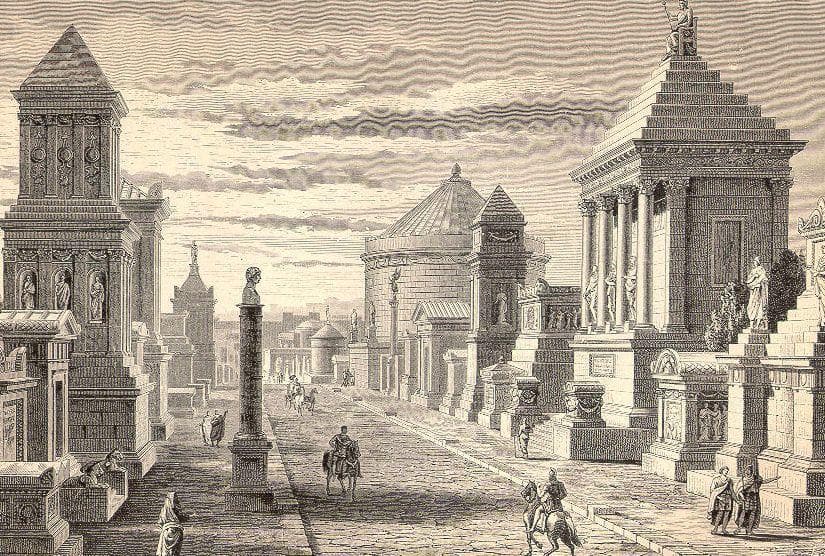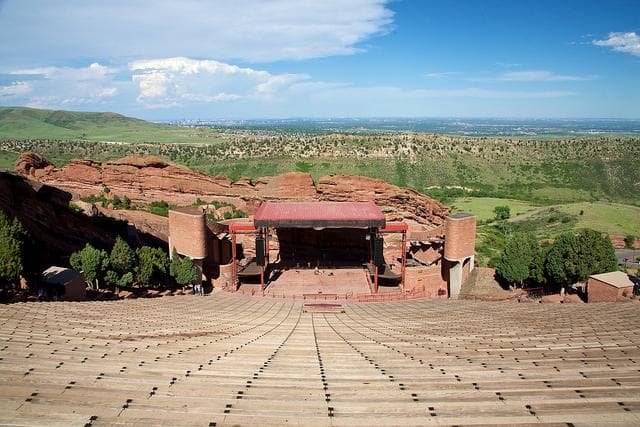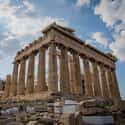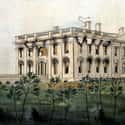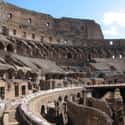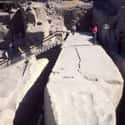-
(#1) Parthenon
- Europe
You might be forgiven for thinking that the Parthenon got its current battle-scarred look from WWII, but no: Athens fell to the Germans and Italians in 1941 without being bombarded.
The Parthenon is so badly damaged because of an event which occurred two-and-a-half centuries earlier, on September 26, 1687. A Venetian force led by Captain-General Francesco Morosini fired an artillery shell at Ottoman forces dug in on the Acropolis. The shell was a direct hit on the 2000-year-old temple. As if that wasn't bad enough, the Ottomans had been using the Parthenon as a gunpowder depot. Massive damage ensued, forever scarring an irreplaceable cultural treasure.
-
(#3) White House
- Washington, D.C., USA
Everybody knows the White House was burned by British troops during their occupation of Washington D.C. in 1814, during the War of 1812. What's less well known is that remnants of the conflagration still exist today.
The original sandstone part of the structure was not rebuilt, and many of the blocks bear visible scorch marks from that fateful day more than 200 years ago.
-
(#6) The Aztec Templo Mayor Was Torn Down By Spaniards Who Built A Cathedral With Its Stone
When Spanish conquistadores first beheld the Aztec capital of Tenochtitlan, they were astonished by its architectural splendor. Of course, that didn't stop them from conquering the city, deposing the Emperor, and tearing down some of the most impressive Aztec monuments.
Chief among these was the Templo Mayor, a huge temple complex dominated by a massive step pyramid some 200 feet tall, where human sacrifice was performed on a nigh-industrial scale.
After the Battle of Tenochtitlan and the subsequent establishment of Spanish rule in Mexico, the Spaniards used some of the Templo Mayor's stone in constructing the nearby Cathedral of the Assumption of Mary, which still stands today. An archeological site and museum can be visited where the old temple once stood.
-
(#8) Colosseum
- Rome, Italy
The Flavian Amphitheater, better known today as the Colosseum, was opened for business in the year 80 or 81, its inaugural Games lasting for months and featuring entertainments of tremendous splendor (and violence).
After the fall of the Empire in the 5th century (and with Europe's rapidly expanding Christianization), gladiatorial games weren't exactly a thing anymore. The last recorded gladiatorial exhibition at the Colosseum occurred in 404, and the last staged animal hunt (venatione) in 523.
As is often the case with ancient structures, the Colosseum became an awfully tempting source of construction materials. This was exacerbated by two major earthquakes, in 847 and 1231, which shook loose large quantities of the building's stones. Loath to let good stone go to waste, medieval and Renaissance Romans repurposed the materials for new structures, including the steps of St. Peter's, the Palazzo di Venezia, and others.
-
(#2) Great Sphinx of Giza
- Giza, Egypt
Popular legend claims that Napoleon's gunners - whether on purpose or accidentally - shot off the Great Sphinx's nose during his 1798 campaign in Egypt.
But sketches of the Sphinx, made decades earlier, show the nose was already gone. The culprit may be a man named Muhammad Sa'im al-Dahr, who, according to 15th-century Arab historian al-Maqrizi, took out the nose in 1378 because he was enraged after seeing peasants making pagan offerings to the ancient statue.
A less-exciting explanation is that simple erosion did the job. But where's the fun in that?
-
(#9) An Egyptian Obelisk Cracked During Construction And Was Left In The Quarry For 3500 Years
The city of Aswan, along the Nile in Southern Egypt, is home to a number of ancient stone quarries where the Egyptian pharaohs had many of their monuments constructed. Particularly striking is the Unfinished Obelisk, which was abandoned where it lay thousands of years ago because a large fissure was discovered near its center.
Evidently commissioned by the female pharaoh Hatshepsut, the Obelisk would have stood 137 feet tall - more than 30 feet taller than the highest extant ancient obelisk, the Lateran Obelisk in Rome. But because of that crack, innumerable hours of backbreaking labor had to be abandoned.
New Random Displays Display All By Ranking
About This Tool
As a witness to a period of history, historical buildings are now receiving more and more attention and protection from governments. But in the past, they were unfortunately destroyed for various reasons, from accidental losses to man-made destruction, from war turbulence to natural disasters, precious cultural relics and historic sites are facing many potential disasters.
They are all magnificent and fragile human memories and have important and unique historical, archaeological or religious significance. Many people are expressing heartache for the disasters that destroy monuments. The generator includes random 10 ruined famous monuments in the world.
Our data comes from Ranker, If you want to participate in the ranking of items displayed on this page, please click here.

